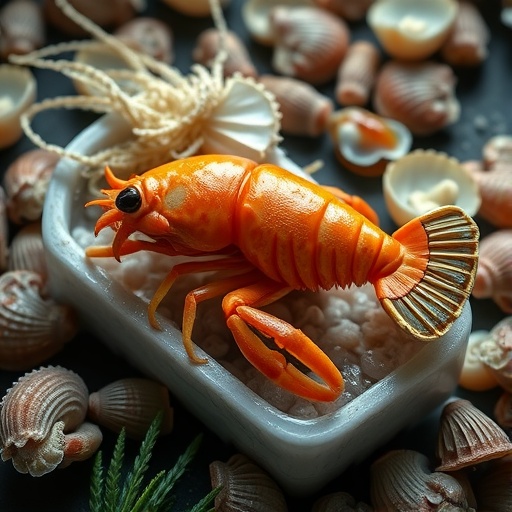A startling revelation in paleobiology has emerged from a recent study unveiling that a parasite we commonly associate with modern oysters has a lineage that extends back nearly half a billion years, long before the dawn of the dinosaurs. This groundbreaking research employed cutting-edge micro-computed tomography (micro-CT) scanning techniques to explore 480-million-year-old fossilized shells from a Moroccan site renowned for its exceptional preservation of ancient marine life. The team discovered a recurring series of intricate patterns, resembling question marks, intricately etched both on the surface and within these ancient bivalve shells.
Karma Nanglu, the lead paleobiologist from UC Riverside, described these enigmatic marks as deliberately structured rather than accidental scratches, each fossil bearing seven or eight pronounced question-mark shapes. The careful distribution and repetition of these forms hinted at an underlying biological origin, stirring curiosity and debate among the researchers. Such distinct and consistent patterning immediately suggested a specific behavior rather than random natural processes or artifact formation.
Javier Ortega-Hernandez, an evolutionary biologist at Harvard and co-author of the study, emphasized the intellectual challenge posed by these formations, noting how their peculiar morphology seemed almost like a cryptic message from the deep past. After extensive literature review and comparative modern biology investigations, the team converged on the conclusion that these marks are traces left by a soft-bodied marine annelid worm belonging to the spionid subgroup. These polychaete worms are known to parasitize bivalve shells today, specifically targeting the hard shell tissues rather than the living flesh inside.
The implications of this discovery are profound, as it rewrites the timeline for host-parasite interactions between annelids and shellfish. During the Ordovician period, around 480 million years ago, marine ecosystems were undergoing rapid diversification, with increased predation, mobility, and new ecological dynamics. This was evidently also a period of burgeoning parasitism, as evidenced by the preserved worm trace fossils. The spionid worms exhibited a remarkably consistent behavior pattern that has persisted to the present day, indicating a highly successful evolutionary strategy.
Utilizing high-resolution micro-CT scans enabled the research team to peer inside the fossilized shells without damaging the precious specimens. This non-destructive imaging approach revealed not only surface patterns but also internal structures where the worm larvae had once burrowed. The imaging disclosed that a significant number of host bivalves bore these parasitic scars, which had previously gone unnoticed within layered rock strata resembling a geological multilayered cake. This insight underscores the importance of advanced imaging in paleontology for uncovering hidden ecological interactions.
Further investigation revealed that the parasite’s life cycle involves settling as larvae on the bivalve shells at precise times and locations, followed by selective dissolution of shell material to anchor themselves securely. As the worms grew, they tunneled deeper into the shell matrix, carving the unmistakable question mark formations. Such specialized behavior is unique to the spionids, setting them apart from other marine organisms. The absence of alternative explanations for these patterns emphasizes the evolutionary stasis that this parasitic relationship has experienced.
Interestingly, while the spionid polychaetes do not directly consume the mollusk’s tissues, their burrowing activity weakens the integrity of the shell, increasing vulnerability and mortality rates among bivalve populations. This parasitism represents a chronic stressor affecting oyster survival in modern commercial fisheries, illustrating an ancient ecological interaction persisting through mass extinction events and dramatic environmental shifts. The durability of this relationship challenges traditional perceptions of evolution as a constant flux of change, suggesting some strategies endure due to their effectiveness.
The Moroccan fossil site where these shells were recovered is famed for its exceptional window into the Ordovician marine world, capturing snapshots of ancient behavior rarely preserved in the geological record. Beyond the parasitic trace fossils, the site also yields evidence of interspecies interactions, such as animals scavenging on the carcasses of nektonic cephalopod-like creatures. These findings enrich our understanding of early marine ecosystems, which were more complex and interconnected than previously assumed.
This discovery also illuminates the evolutionary history of spionid annelids, demonstrating that their parasitic strategy has remained fundamentally consistent for nearly half a billion years. Such evolutionary stasis is rare and prompts reevaluation of how ecological roles and behaviors are maintained through deep time. It raises intriguing questions about the genetic and developmental constraints that stabilize successful adaptations amidst environmental upheavals.
The study’s integration of paleontological data with modern biological analogs exemplifies a multidisciplinary approach crucial for decoding the fossil record’s more cryptic chapters. By matching the ancient shell patterns to contemporary spionid behaviors documented in recent studies, the researchers secured a “smoking gun” affirmation of the parasite’s identity. This methodological synergy highlights the power of combining advanced imaging, ecological theory, and comparative anatomy.
Ultimately, this research reveals not just a window into the distant past but also offers tangible insights relevant to today’s marine ecosystems and economic activities. Understanding the longevity and impact of spionid parasitism could inform strategies for managing oyster health and sustainability in fisheries. It reminds us that ancient evolutionary tale is still unfolding beneath the waves, influencing the resources we rely on and the biodiversity we strive to protect.
This remarkable finding stands as a testament to the endurance of life’s complex interrelationships and the subtle traces they leave behind. What initially appeared as mysterious, archaic scribbles on fossil shells now proclaim a narrative of survival, adaptation, and continuity spanning geological epochs. As technology advances and deeper explorations continue, more such revelations promise to rewrite the story of life’s vast and intricate history on Earth.
Subject of Research: Parasitism of bivalve shells by spionid polychaete worms
Article Title: A 480-million-year-old parasitic spionid annelid
News Publication Date: 30-Oct-2025
Web References:
https://www.sciencedirect.com/science/article/pii/S2589004225019820#bib15
DOI: 10.1016/j.isci.2025.113721
Image Credits: Vasily Radishevsky / Far Eastern Branch of the Russian Academy of Sciences
Keywords: Parasites, Parasitism, Animal fossils, Fossil records, Fossils, Paleontology, Shellfish, Bivalves, Mussels, Mollusks, Invertebrates, Aquatic animals, Animals




